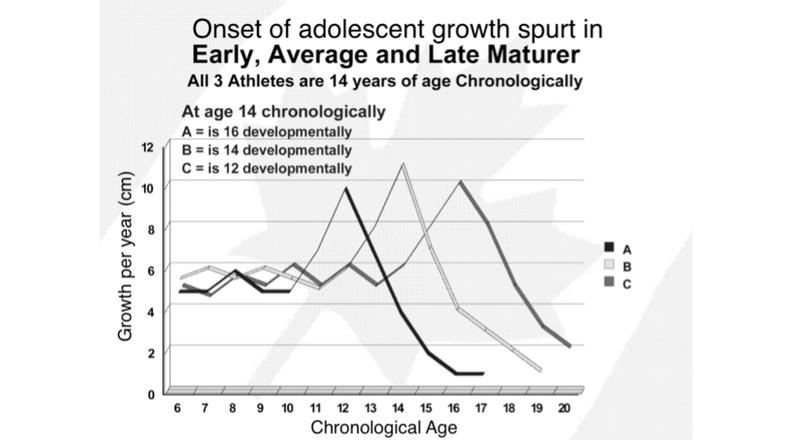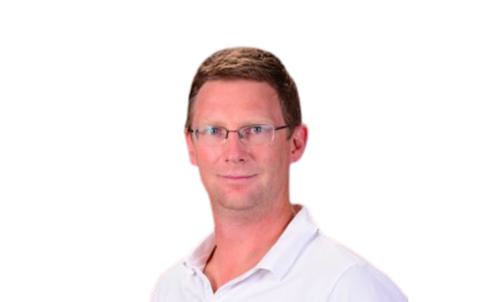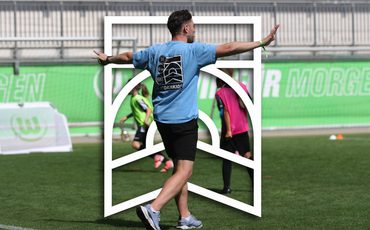
Determining athlete maturity to inform coaching practice
with Dr. Jason Tee
I recently had the opportunity to attend the NSCA National Conference in Las Vegas. For those of you who don’t know, NSCA is the National Strength and Conditioning Association, which is the governing body for strength and conditioning in the United States, but is also an influential global organization. Now Vegas is an absolute hoot (where I slept about 20 hours in 5 days), but between extra-curricular activities I did have the opportunity to attend a number of very good talks from some S&C industry heavy weights.
One of the first things to strike me at the conference is the growing acceptance of the importance of Long-Term Athlete Development (LTAD). A large number of the conference delegates were high school S&C coaches (I even met a few working with younger athletes), and an entire conference strand was dedicated to LTAD. I think that this underlines the fact that youth participants make up a huge proportion of the strength and conditioning industry, and as such we have a duty to provide these athletes with the most appropriate training possible. The days of superimposing adult training programs onto children and teenagers are well and truly behind us.
I want to use this post to describe some of the new and innovative approaches that are starting to be adopted for youth athletes, but first its important to ensure that everyone has a basic understanding of maturity. Adolescents experience a growth spurt a few months after the onset of puberty, largely as a result in the increasing concentration of steroid hormones that their bodies produce1. This is an exciting time for young athletes as they experience rapid gains in stature, body mass, strength and power. The downside of this experience is that they are also likely to experience a loss of co-ordination as they learn how to control and apply these newly developed abilities 1. Generally we would expect this growth spurt to occur at around 12 years old for females and 14 years old for males, but there is a huge amount of inter-individual variability in maturation. There may be up to a two year difference in relative biological maturity of children who are chronologically the same age2 (Figure 1). Practically speaking, what this means is that there is a very uneven playing field for athletes competing against each other during early adolescence (Figure 2).

Figure 1 – Differences in biological maturity of three athletes with the same chronological age.
Research has provided us with new approaches to be able to appropriately manage these differences in maturity. One of the most important developments in the field of LTAD has been the development of algorithms that allow for the determination of maturity status. The most popular of these assessments is the Mirwald equation, largely because it relies on easily collected body mass, sitting and standing height data3. An online calculator
is available here. Using this equation, it is relatively easy to determine now many years pre- or post-peak height velocity (PHV) an athlete is, and this has important implications for how an athlete might train. I think that maturity testing should be an important part of every school and sports club’s youth program. Very different goal setting conversations would occur between coaches, players and parents if all parties know that an athlete was 2 years pre-PHV, or 1 year post-PHV, especially if these athletes are the same age.
Maturity assessment has clear implications for player selection and de-selection. It has been demonstrated that if late-maturers can survive early de-selection they are likely to go on to become more successful than early maturers4. Recently, bio-banding tournaments (where players are grouped by maturation status, not age-group) have been implemented in youth football5. These tournaments are reportedly more physically challenging for early-maturers, and allow late-maturers more opportunity to use their skills5.
Recently some innovative research has demonstrated that certain types of training are more effective at different stages of maturity. It should be noted that athletes can benefit for all types of physical training at all times during their development6, but there may be more “bang for your buck” from certain types of training at different ages. In particular, it seems that pre-PHV athletes benefit more from stretch shortening cycle (SSC)/plyometric type training than mature athletes, while mature athletes benefit more from strength specific training than pre-PHV athletes7,8. The benefits of strength training for children and adolescent athletes are clearly documented9, but this new information suggests that less physically mature athletes will benefit most from a combination of strength and plyometric type training, rather than just strength training alone. In addition it has been demonstrated that combined strength/plyometric type training is effective in reducing injuries10, which is an added benefit!
The information presented here demonstrates that a “one-size fits all” approach to physical conditioning for young athletes is simply not good enough any more. Growth and development are highy-individualised and athlete development pathways should accommodate the differences between athletes. Does the system currently in place at you organization allow you to individualise training for athletes at different stages of maturity?
References
1. Lloyd RS, and Oliver JL. Strength and conditioning for young athletes: science and application. Routledge; 2013.
2. Gasser T, Sheehy A, Molinari L, and Largo RH. Growth of early and late maturers. Ann Hum Biol. 2001;28(3):328-36.
3. Mirwald RL, Baxter-Jones AD, Bailey DA, and Beunen GP. An assessment of maturity from anthropometric measurements. Med Sci Sports Exerc. 2002;34(4):689-94.
4. McCarthy N, Collins D, and Court D. Start hard, finish better: further evidence for the reversal of the RAE advantage. J Sports Sci.
2016;34(15):1461-5. doi:10.1080/02640414.2015.1119297.
5. Cumming SP, Brown DJ, Mitchell S, Bunce J, Hunt D, Hedges C, Crane G, Gross A, Scott S, Franklin E, Breakspear D, Dennison L, White P, Cain A, Eisenmann JC, and Malina RM. Premier League academy soccer players' experiences of competing in a tournament bio-banded for biological maturation. J Sports Sci. 2017:1-9. doi:10.1080/02640414.2017.1340656.
6. Lloyd RS, and Oliver JL. The youth physical development model: A new approach to long-term athletic development. Strength & Conditioning Journal. 2012;34(3):61-72.
7. Radnor JM, Lloyd RS, and Oliver JL. Individual Response To Different Forms Of Resistance Training In School Aged Boys. The Journal of Strength & Conditioning Research. 2017.
8. Lloyd RS, Radnor JM, De Ste Croix MB, Cronin JB, and Oliver JL. Changes in Sprint and Jump Performances After Traditional, Plyometric, and Combined Resistance Training in Male Youth Pre- and Post-Peak Height Velocity. J Strength Cond Res. 2016;30(5):1239-47. doi:10.1519/JSC.0000000000001216.
9. Lloyd RS, Faigenbaum AD, Stone MH, Oliver JL, Jeffreys I, Moody JA, Brewer C, Pierce KC, McCambridge TM, Howard R, Herrington L, Hainline B, Micheli LJ, Jaques R, Kraemer WJ, McBride MG, Best TM, Chu DA, Alvar BA, and Myer GD. Position statement on youth resistance training: the 2014 International Consensus. Br J Sports Med. 2014;48(7):498-505. doi:10.1136/bjsports-2013-092952.
10. Herman K, Barton C, Malliaras P, and Morrissey D. The effectiveness of neuromuscular warm-up strategies, that require no additional equipment, for preventing lower limb injuries during sports participation: a systematic review.
BMC Med. 2012;10:75. doi:10.1186/1741-7015-10-75.
Contributor:

Dr. Jason Tee
Jason is Duputy Headmaster at Jeppe High School for Boys in Johannesburg, South Africa. An experienced Strength and Conditioning Coach, Jason has also worked as a Director of Sport, a Senior Lecturer and as a Rugby Coach.
Comments
Related Pages


